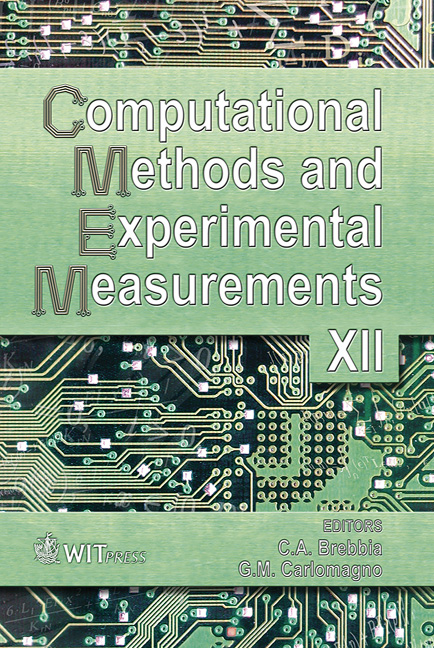Direct Simulation Of Fluid-dynamics Sound By The Finite Difference Lattice Boltzmann Method
Price
Free (open access)
Transaction
Volume
41
Pages
10
Published
2005
Size
1,495 kb
Paper DOI
10.2495/CMEM050071
Copyright
WIT Press
Author(s)
M. Tsutahara, A. Tamura & K. Shikata
Abstract
A lattice Boltzmann model for a compressible fluid is stably calculated by the finite difference scheme (FDLBM), and aerodynamic sound is directly calculated. Aeolian tone and edge tone are successively obtained by the third-order upwind scheme in space and the second order Runge Kutta technique. In order to calculate sound emitted from moving body, the arbitrary Lagrangian Eulerian (ALE) technique is also applied to the FDLBM and techniques for connecting still mesh and moving mesh are presented. Sounds emitted by an oscillating square cylinder and cube and also rapidly rotating elliptic cylinder are successively simulated. Keywords: lattice Boltzmann method, aero-acoustics, direct simulation of sound. 1 Introduction The Lattice Boltzmann method is now one of the powerful tools of computational fluid dynamics, and applied mainly to complex fluid flows [1]-[ 6]. But only a few applications for compressible flows have been reported [7]-[ 9] because most models (lattice BGK models) are unstable in calculation. The stable finite difference scheme can be applicable to discrete the BGK equation and by these schemes the calculation becomes remarkably stable [10]-[12]. On the other hand, aero-acoustics is an important branch of the fluid dynamics. But direct simulation of the sound waves is still a hard task for the following reasons: (1) The sound pressure is much smaller (10-3 -10-4) than the whole pressure variation and then adequate accuracy is necessary. (2) The acoustic field spreads in a very large region and the load on computers is still heavy. Now the direct simulation of sound waves on the basis of Navier-Stokes
Keywords
lattice Boltzmann method, aero-acoustics, direct simulation of sound.





